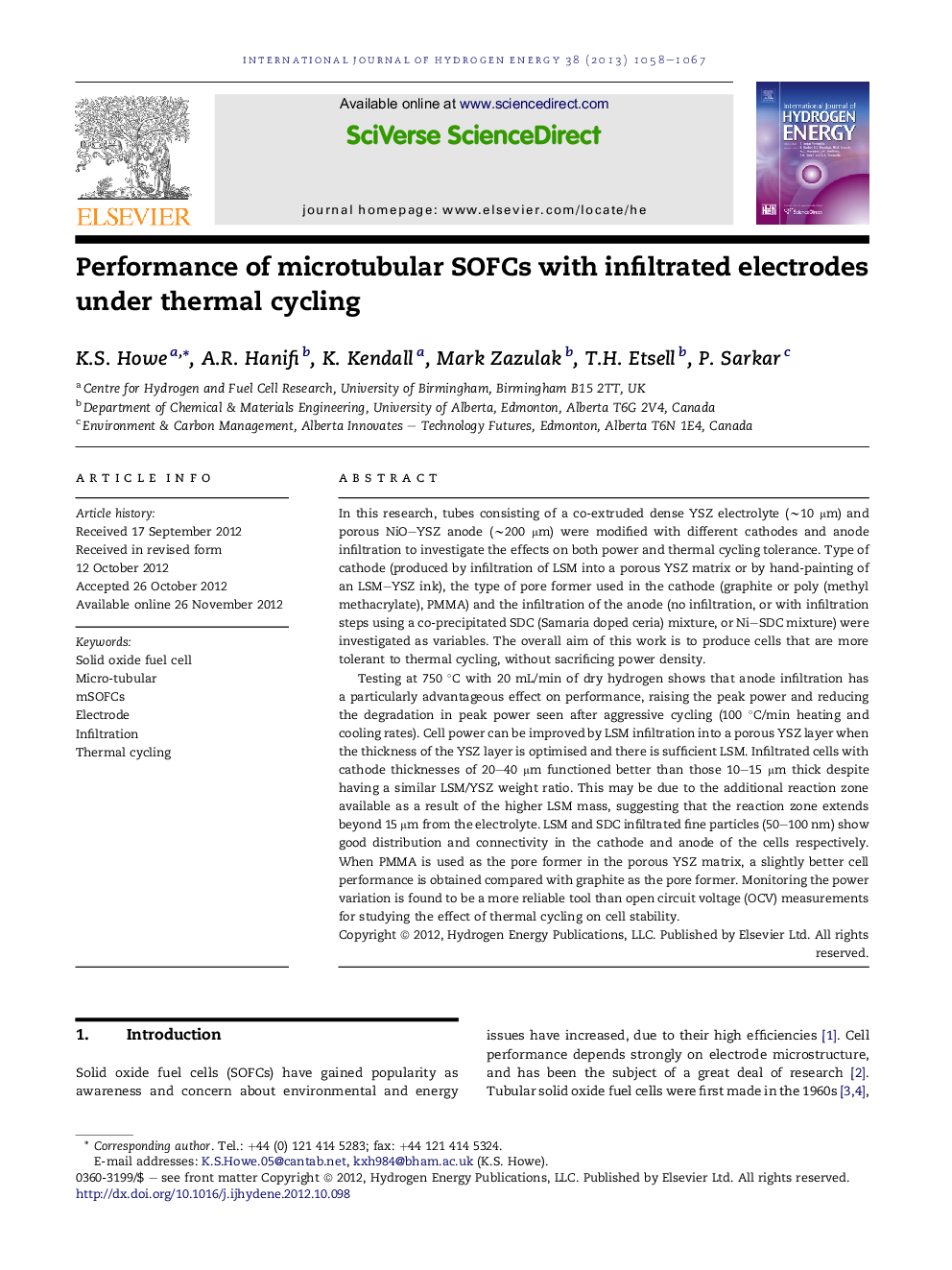| Article ID | Journal | Published Year | Pages | File Type |
|---|---|---|---|---|
| 1282072 | International Journal of Hydrogen Energy | 2013 | 10 Pages |
In this research, tubes consisting of a co-extruded dense YSZ electrolyte (∼10 μm) and porous NiO–YSZ anode (∼200 μm) were modified with different cathodes and anode infiltration to investigate the effects on both power and thermal cycling tolerance. Type of cathode (produced by infiltration of LSM into a porous YSZ matrix or by hand-painting of an LSM–YSZ ink), the type of pore former used in the cathode (graphite or poly (methyl methacrylate), PMMA) and the infiltration of the anode (no infiltration, or with infiltration steps using a co-precipitated SDC (Samaria doped ceria) mixture, or Ni–SDC mixture) were investigated as variables. The overall aim of this work is to produce cells that are more tolerant to thermal cycling, without sacrificing power density.Testing at 750 °C with 20 mL/min of dry hydrogen shows that anode infiltration has a particularly advantageous effect on performance, raising the peak power and reducing the degradation in peak power seen after aggressive cycling (100 °C/min heating and cooling rates). Cell power can be improved by LSM infiltration into a porous YSZ layer when the thickness of the YSZ layer is optimised and there is sufficient LSM. Infiltrated cells with cathode thicknesses of 20–40 μm functioned better than those 10–15 μm thick despite having a similar LSM/YSZ weight ratio. This may be due to the additional reaction zone available as a result of the higher LSM mass, suggesting that the reaction zone extends beyond 15 μm from the electrolyte. LSM and SDC infiltrated fine particles (50–100 nm) show good distribution and connectivity in the cathode and anode of the cells respectively. When PMMA is used as the pore former in the porous YSZ matrix, a slightly better cell performance is obtained compared with graphite as the pore former. Monitoring the power variation is found to be a more reliable tool than open circuit voltage (OCV) measurements for studying the effect of thermal cycling on cell stability.
► Infiltrated cathodes give stronger performance than painted cathodes, for a comparable mass of LSM. ► Thermal cycling resistance of infiltrated cathode is poorer than that of painted cathodes. ► Anode infiltration (SDC, Ni–SDC) has a strong positive effect on cell performance. ► PMMA pore-former gives a better microstructure, and so performance, than graphite. ► Cycling degradation due more to electrode changes than electrolyte cracks.
